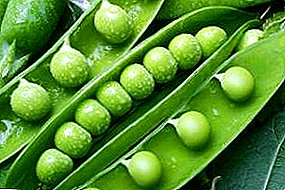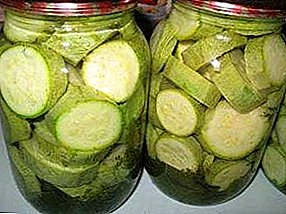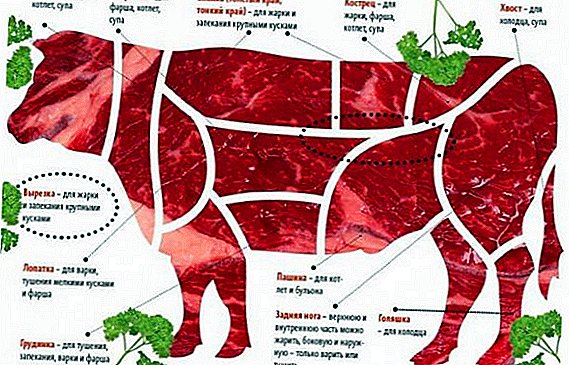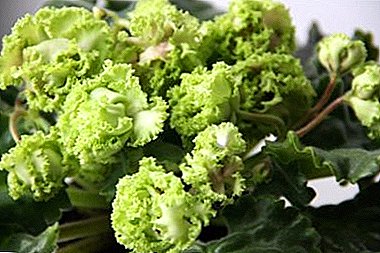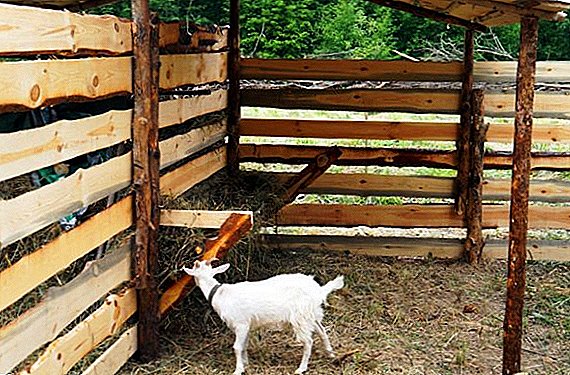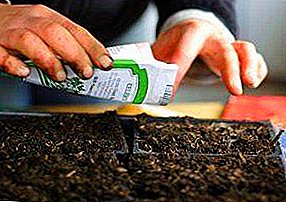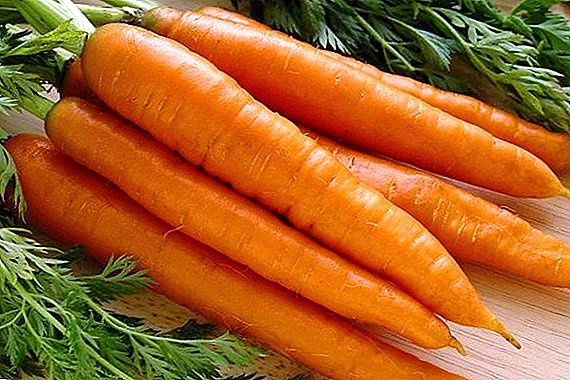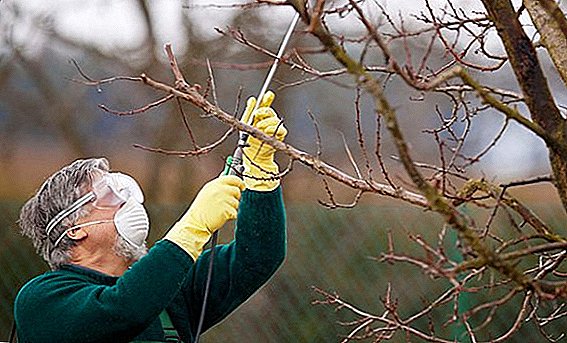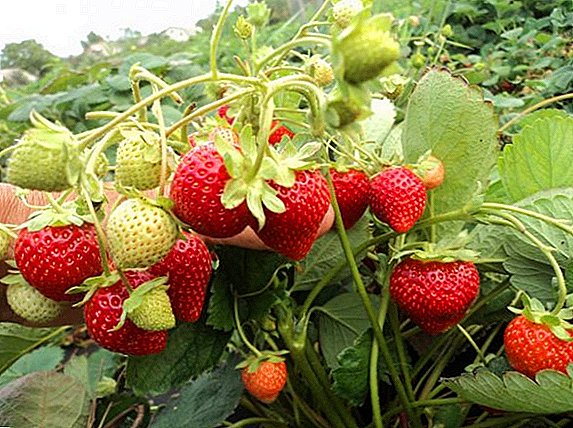 Strawberries "Capri" is specially created for real sweet teeth. The berries have a delicate, delicate aroma and an extremely sweet taste with a light sourness. However, farmers and gardeners fell in love with this variety not only for its excellent taste, but also for high yields and uninterrupted fruiting.
Strawberries "Capri" is specially created for real sweet teeth. The berries have a delicate, delicate aroma and an extremely sweet taste with a light sourness. However, farmers and gardeners fell in love with this variety not only for its excellent taste, but also for high yields and uninterrupted fruiting.
Variety description
The strawberry variety "Capri" is considered one of the newest, which was bred by Italian breeders, thanks to the crossing of the variety CIVRI-30 with the hybrid R6-R1-26. 
As a result of such manipulations a new species was obtained, the main advantages of which are:
- continuous fruiting. Under the condition of early spring planting of crops, the plant begins to bear fruit, from the end of June to mid-November;
- high yields. The yield per bush is about 2 kg, however, with proper, regular care, the rate can be much higher;
- excellent frost resistance and resistance to various diseases;
- good transportability. Since the fruits are rather large and dense, they are not afraid of transportation, they do not spoil and do not crumple;
- compact dimensions of the bush;
- resistance to drought, as well as the possibility of growing without shading. At extremely high temperatures, the plant does not bloom and does not bear fruit, but it does not die;
- excellent taste. Strawberries have an amazing taste. Saturated sweet taste is not lost, even when the plant is fruiting in the rainy season.
Did you know? The main task of breeding this variety was to obtain resistant to frost, diseases and pests of the plant, which would be characterized by increased yield, transportability and presentation of berries. Capri received from each of their grandparent only the best of their qualities.Strawberries "Capri" - sredneroslaya culture with a slight thickening of the leaves. Differs erect, powerful peduncles with a large amount of pollen. Flowering is long, fairly stable. The berries have a conical shape, large, with a weight of about 35-40 g. They can be bright red or burgundy in color with a smooth shiny surface. On taste - sweet and juicy, at the same time, quite dense and firm.

Despite the huge arsenal of advantages, this variety has its drawbacks:
- difficulty breeding due to the small number of antennae;
- requires regular watering and feeding, especially at the initial stage of growth;
- the need for periodic mulching and loosening the soil.
Plant on your site such delicious strawberry varieties as: "Queen Elizabeth", "Elsanta", "Marshal", "Asia", "Albion", "Malvina", "Masha", "Queen", "Russian Size", " Vicoda, Festival, Kimberley and Lord.
Characteristics of berries and yield
A special feature of strawberries "Capri" is considered a successful combination of the density of the berries with their high juiciness. Indeed, the structure of the berry is quite dense, solid, suitable for transportation over long distances, has the correct shape in the form of a cone, has an excellent presentation. Strawberries have a sweet taste, and, sugar content does not decrease, even with heavy precipitation. The flesh is dense, uniform, fleshy, at the same time, with this, very juicy. The weight of one fruit varies from 35 g to 40 g. Color - from bright red to burgundy. With one bush for the season, you can collect about 2 kg of berries.
Important! Peak crop yields in the first or second year of its fruiting. In the third or fourth year, the yield will inevitably fall. The reason for this is considered to be a long undulating fruiting, which shortens the life cycle of the crop.
Agrotechnics of growing and caring for strawberries
"Capri" - one of those varieties that is great for both home cultivation and cultivation on an industrial scale. To obtain the highest possible yields, several important rules should be followed when growing and caring for a plant. 
Selection of seedlings
Properly selected seedlings are considered a guarantee that the plant will take root perfectly, will delight with excellent flowering and regular fruiting. When buying should pay attention to such aspects:
- the presence of dark spots and black dots on the leaves suggests that they are susceptible to fungal diseases. However, if they are found on the seedlings in small quantities, which is offered at the end of the summer, then it can be purchased;
- pale leaves can signal that the plant suffers the most dangerous disease - phytophthora necrosis (death) of the horns. Unfortunately, the treatment of this disease can not be;
- shriveled young leaves are considered a sign of damage by the strawberry mite. It is absolutely impossible to buy such seedlings.
Good quality seedlings should have:
- foliage, saturated, green with a smooth, shiny, slightly "trimmed" surface;
- rather thick horn (about 7 mm). The thicker the horn is, the higher the yields will be;
- long root system (not less than 7 cm) without rotten or dry roots.
 It is ideal to acquire seedlings from a manufacturer that offers healthy cultures obtained from sterile test-tube plants. If this is not possible, then you can search for it in the markets. But in this case, it is better to choose a trusted seller who has been selling seedlings for years.
It is ideal to acquire seedlings from a manufacturer that offers healthy cultures obtained from sterile test-tube plants. If this is not possible, then you can search for it in the markets. But in this case, it is better to choose a trusted seller who has been selling seedlings for years.Conditions of detention
Strawberries "Capri" can not be called too demanding to the conditions of detention. However, some rules must be followed. The plant prefers non-acidic, sandy and loamy soils, it survives well in areas where they used to grow greens, cabbage, and alfalfa.
Important! It is not recommended to plant "Capri" on the land, where before there were plants such as strawberries, potatoes, raspberries or tomatoes.Groundwater, which passes close to the surface, will negatively affect the growth of the plant, so you need to find another place for it or make a bed on an elevation. Strawberries should be planted on a previously prepared area, with a sufficient amount of light, which is necessary for good fruiting. Before planting in open ground, it is recommended to grow seedlings in small containers with a diameter of 10-15 cm.
If you have a small area for growing strawberries, then you can build a bed of a pyramid or a vertical bed.The pots are filled with soil, leaving 3-4 cm from the top, the seeds are scattered on the ground, sprinkled with a small amount of earth and irrigated from a spray bottle. To seed quickly sprouted, they cover up with plastic wrap. After 2-3 weeks, the first shoots will appear, which are planted in open soil in May, sometimes in autumn. For planting it is better to select the most powerful and healthy shoots, with 2-3 large leaves.

Soil and fertilizer
Strawberry "Capri" is a real worker, gives fruit to complete exhaustion, which is why it requires good soil and regular feeding. Berry is best grown on loamy, sandy, slightly acidic soil. Nutrients and humus must be present in the ground. If the groundwater is too close to the surface, then it is necessary to plant the bushes on the beds raised by 40-45 cm. Fertilizing is necessary for the culture regularly: during planting, during the whole flowering, during the period of berry formation and ripening.
Plant strawberries in autumn and spring.It should be noted that during different periods different fertilizers are needed: during planting, it is better to give preference to nitrogen-containing mixtures, during fruit formation - to fertilizers with a minimum nitrogen content (potassium or phosphorus). Experts advise when planting strawberries do not save on nitrogen, because the energy of the culture is aimed at the formation of fruits, while the root system receives less nutrients. For the roots and greens to develop normally, they need sufficient feeding.
Watering and moisture
For the normal development of the plant and good fruiting, the plant must provide good, abundant watering throughout the season, followed by weeding, mulching and loosening of the soil. Only the roots are watered, without affecting the leaves of the plant, as this can provoke the appearance of fungi.  Good hydration is especially important during the period of the formation of berries (from flowering to harvest). Strawberry loves quite moist soil. Nevertheless, care must be taken to ensure that water does not stagnate and does not create swamps, since overmoistened soil can cause some diseases that can lead to the death of a crop.
Good hydration is especially important during the period of the formation of berries (from flowering to harvest). Strawberry loves quite moist soil. Nevertheless, care must be taken to ensure that water does not stagnate and does not create swamps, since overmoistened soil can cause some diseases that can lead to the death of a crop.
Relation to temperature
Strawberry "Capri" - remontantnaya, refers to the plants of a neutral day light. Regardless of the duration of the day, the plant is able to form inflorescences. Despite the fact that the culture loves the sun's rays and warmth, it is recommended to plant it on an overcast day in order not to damage the foliage. The plant is quite resistant to low and high temperatures. In the winter, before the onset of cold weather, it is recommended to cover it. Due to resistance to frost and heat, this variety can be grown in regions with different climates.
Reproduction and planting
Strawberries are planted according to the classical scheme: the distance between the bushes should be about 25-30 cm, between the rows - 40-45 cm. A slight increase in planting density is allowed, since the plant has a compact size and a small amount of whiskers. When disembarking, it is necessary to make holes in the ground, put the seedlings there with a lump of soil. The root system should be no more than 10 cm in length, otherwise it is better to trim it. During planting the plant should not be under direct sunlight, otherwise it will wither.  The ideal time is considered to be a cool time, under the conditions of which strawberries quickly and successfully take root. The soil should be moderately wet, but not damp, without weeds. The upper kidney when landing is left on the surface. After planting, soil is sprinkled with straw mixed with a small amount of peat or sawdust. If the plant is planted in early spring, the first fruits can be collected in mid-June.
The ideal time is considered to be a cool time, under the conditions of which strawberries quickly and successfully take root. The soil should be moderately wet, but not damp, without weeds. The upper kidney when landing is left on the surface. After planting, soil is sprinkled with straw mixed with a small amount of peat or sawdust. If the plant is planted in early spring, the first fruits can be collected in mid-June.
Did you know? Young bushes planted in the spring, with proper care and timely watering, a month after rooting, go into the flowering phase.The reproduction of this type of strawberry is carried out by the antennae. In rare cases, use the seed method. With a small number of antennae can divide the bush. After the first fruiting should be cut in large plants all flower stalks. It is recommended to renew the bushes every 2-3 years, because every year their fertility decreases.
Growing difficulties and recommendations
Caring for a strawberry in this class is practically no different from caring for other varieties:
- Immediately after the snow melt, a visual inspection of the plant should be carried out, all old dried leaves and flower stalks should be removed;
- at the same time, it is necessary to thoroughly loosen the soil around the bush, to make nitrogen fertilizers;
- You also need to mulch the soil using sawdust, straw or peat. Such events will stop the growth of weeds and provide access to moisture;
- before the period of flower formation, each bush should be treated with a weak solution of vitriol to prevent plant infection by various parasites;
- throughout the summer it is necessary to ensure that strawberries have enough watering;
- be sure to prepare for the winter in autumn. To do this, the bushes pruned at a height of 10-15 cm from the ground. This makes it possible to strengthen and renew the plant, to prepare it for wintering;
- Before the onset of severe frost, planting should be covered with fir branches, hay, special material or agrofibre. Shelter removed from the bushes with the first warming.
 As a result, growing strawberries can be faced with a number of problems:
As a result, growing strawberries can be faced with a number of problems:
- A large number of drying berries. In most cases, this is due to a lack of moisture, because strawberries are a moisture-loving culture, which should be sufficiently watered.
- Low yield. It may be related to the age of the plant, because the older it is, the less it gives fruit.
- Yellowed leaves. The reasons may be: planting seedlings in direct sunlight, improper soil (for example, very sour), damage by some pests - spider mites, aphids.
- Dried or twisted leaves. These are symptoms that the bush is attacked by parasites - a strawberry mite, a whitefly.
Pests, diseases and prevention
"Capri" must be protected from possible pests and diseases, making regular inspection of the plant. Despite the fact that the strawberry is quite resistant to various diseases, it can sometimes be rotting, attacked by strawberry mite and whitefly. Mite is one of the most dangerous pests that infects the foliage of a plant: they acquire an unnatural yellowish color and are covered with small brown dots. To combat ticks and prophylaxis, bushes are treated with Karbofos, and soil is powdered with colloidal sulfur.
Check out the best varieties of strawberry repair.The whitefly is a small insect that looks like a small mole. It clings to the leaves on the inside, after which they are covered with a layer of mucus and black fungi. As the insect feeds on juice, the green eventually loses its bright color, becomes black and dies. To combat the whitefly used drugs such as "Aktara", "Confidor". A flea shampoo or spray containing fipronide is suitable for this purpose. To prevent many diseases, the bushes until the birth of the kidneys, must be treated with copper sulfate solution. You should also follow the technology of proper watering.
 Too wet soil is a favorable environment for the development of many ailments, including rotting of the root system. The main value of the strawberry variety "Capri" is the ability of continuous fruiting throughout the season. In addition, it has good frost resistance, resistance to the most common diseases, excellent transportability. Due to such properties, "Capri" is widely used for growing for their own purposes, and for wholesale.
Too wet soil is a favorable environment for the development of many ailments, including rotting of the root system. The main value of the strawberry variety "Capri" is the ability of continuous fruiting throughout the season. In addition, it has good frost resistance, resistance to the most common diseases, excellent transportability. Due to such properties, "Capri" is widely used for growing for their own purposes, and for wholesale.

